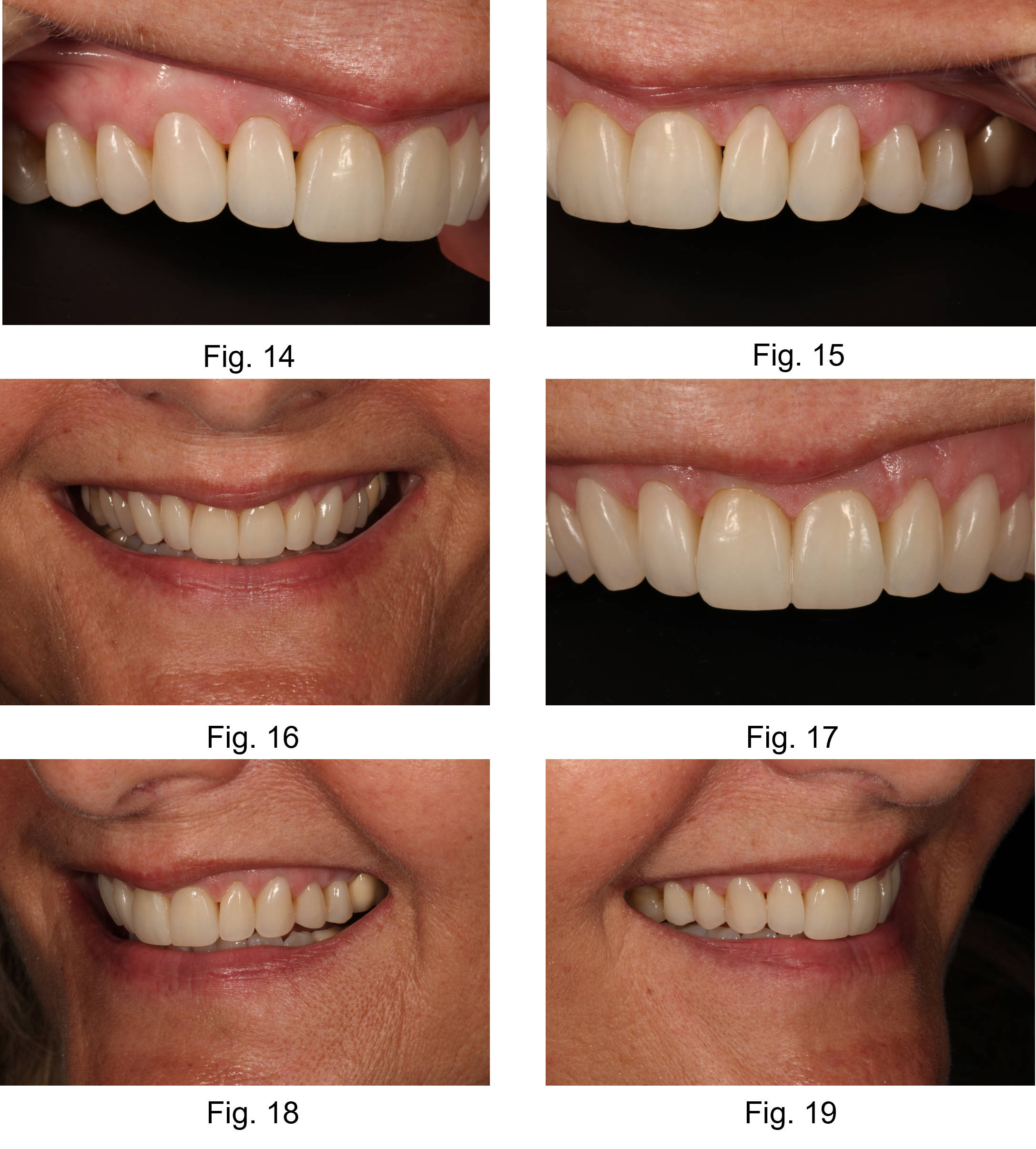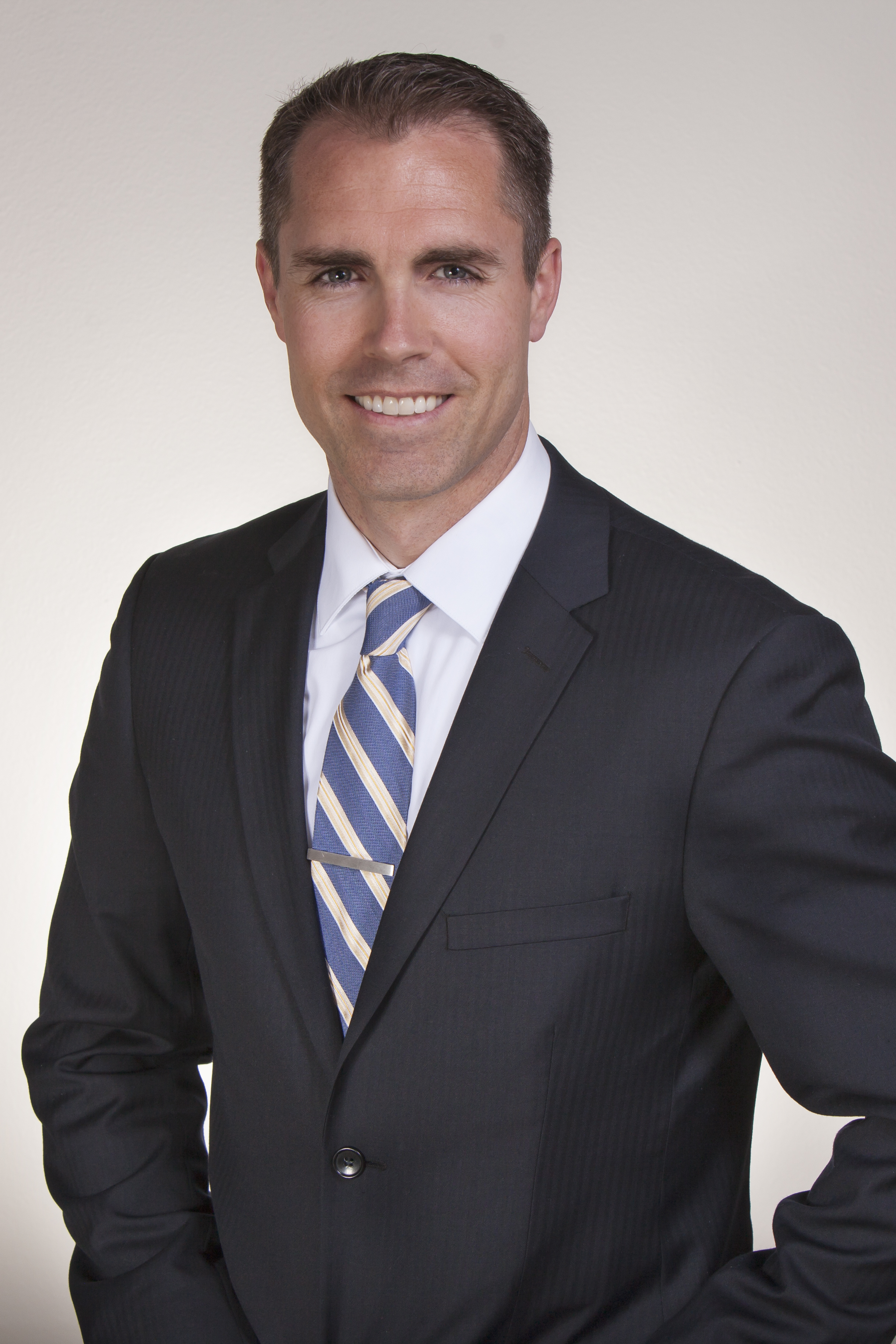When OMNICHROMA first came out and I started using it, I was blown away at how well it worked. Direct composite restorations in the smile zone are what I love to do, and I have always followed the principles of polychromatic layering to achieve ultimate esthetic results. So, it was difficult for me to believe that I could achieve ultimate esthetic results with a single shade composite system. Nevertheless, as I began to practice using OMNICHROMA and the supplemental Blocker in different applications, I quickly learned I could get equal and even sometimes better results than the polychromatic layering method. As time went by, I started asking my contacts at Tokuyama Dental America if and when they were going to come out with a flowable version of OMNICHROMA. To my delight it has finally come to pass, and I wanted to share a few case examples of how I have been using OMNICHROMA FLOW in my daily practice
This first case is a wonderful woman who had just finished with orthodontics to get her teeth into a better position to improve function and periodontal health. As a result of previous bone loss, gum recession, and cervical erosion, she was unhappy with the overall shape of her teeth, uneven edges, and the dark triangles [figure 1, figure 2, figure 3, figure 4].
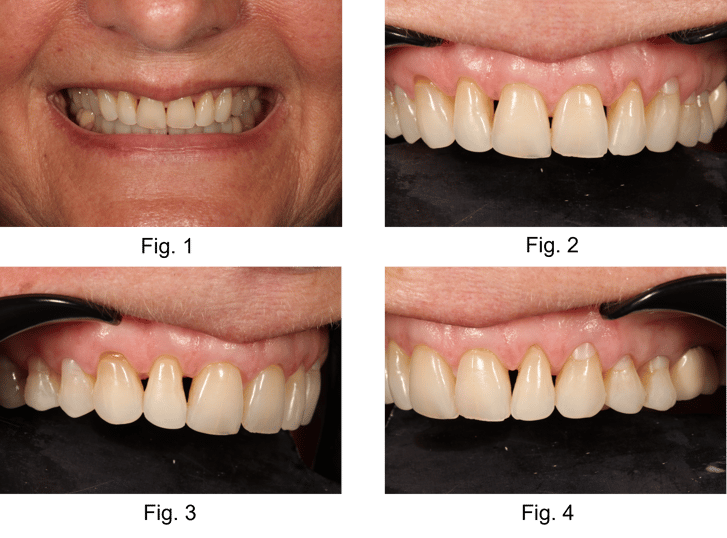
TREATMENT
At her age along with the amount of wear and erosion, the ideal treatment would most likely be indirect porcelain veneers. However, not everyone can afford ten or more porcelain veneers, nor do they desire to drill their teeth down to do it even if they had the money. This patient elected to do direct composite bonding to achieve her goal of a better smile in a non-invasive manner and not break the bank. This case will show three different kinds of restorations. Class V cervical repair on the canines and premolars, class IV incisal edge repair, and class III interproximal dark triangle repair. I used a combination of OMNICHROMA, OMNICHROMA Blocker, and OMNICHROMA FLOW.
Isolation is key in a case like this, so the Optradam (Ivoclar Vivadent) was used for both lip retraction and isolation. Tooth preparation is an important principle with direct anterior bonding if you want to achieve a seamless margin and maximum bond strength. For the cervical erosion areas, after the existing old composite was removed, a gentle infinity bevel was created with a fine diamond bur (Komet) along the cavosurface margin. For the worn incisal edges on the central incisors, a similar conservative infinity bevel was created. The purpose of the bevel is to allow for composite blending and also for increasing surface area for an increased bond strength and resistance to fracture. Air abrasion (Microetcher II, Danville) was then applied to the entire facial and interproximal surfaces along with the lingual interproximal interface of the dark triangles [figure 5].
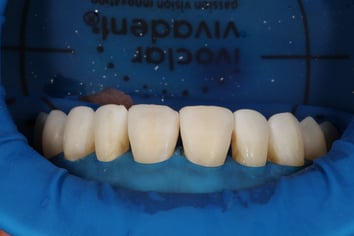
Fig. 5
A total etch of enamel with phosphoric acid followed with Tokuyama Universal Bond (Tokuyama Dental) on both enamel and dentin was completed on teeth #4-13. I first used OMNICHROMA to restore the premolars on both sides and then focused on the anteriors. The silicone putty index that was fabricated from a diagnostic waxup was used to establish a thin lingual shelf of OMNICHROMA [figure 6]. OMNICHROMA BLOCKER was then used as a dentin substitute to mask the hard cavosurface margin [figure 7].
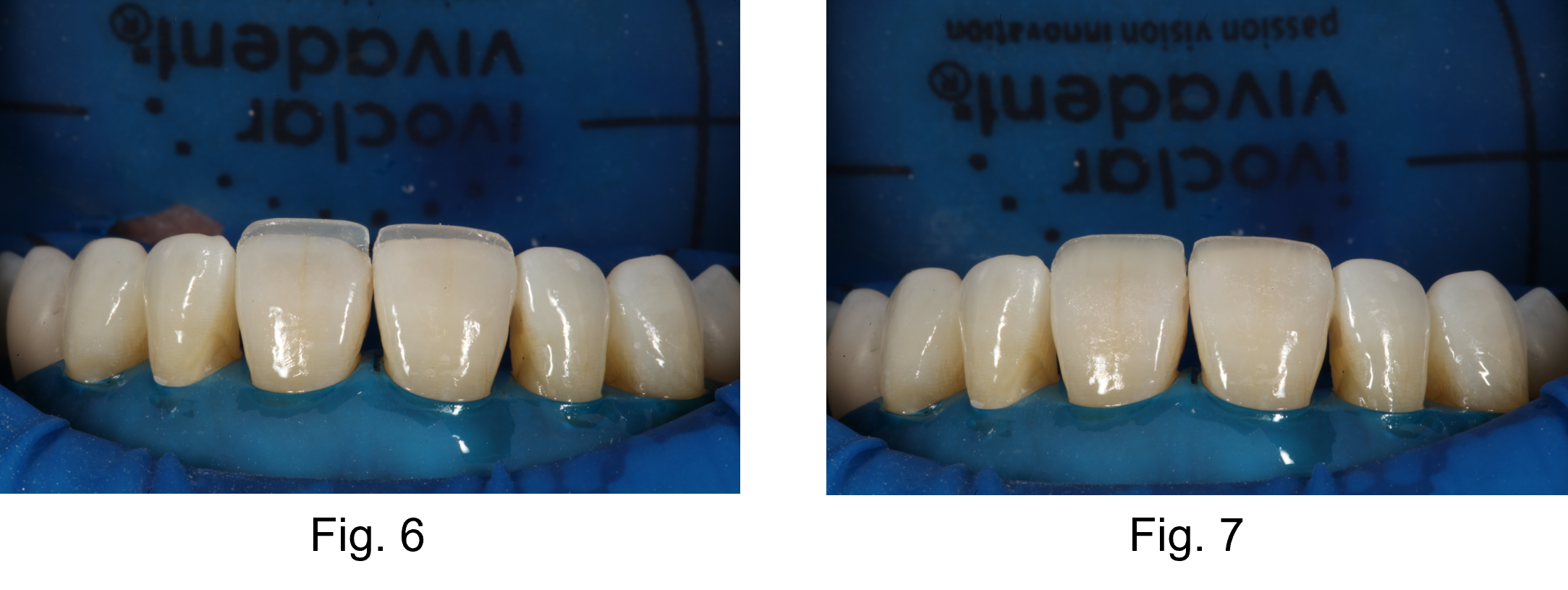 Now that the framework was in place for the central incisors, I moved on to the dark triangles using the OMNICHROMA FLOW with the Bioclear Matrix system (Bioclear) [figure 8, figure 9, figure 10, figure 11].
Now that the framework was in place for the central incisors, I moved on to the dark triangles using the OMNICHROMA FLOW with the Bioclear Matrix system (Bioclear) [figure 8, figure 9, figure 10, figure 11].
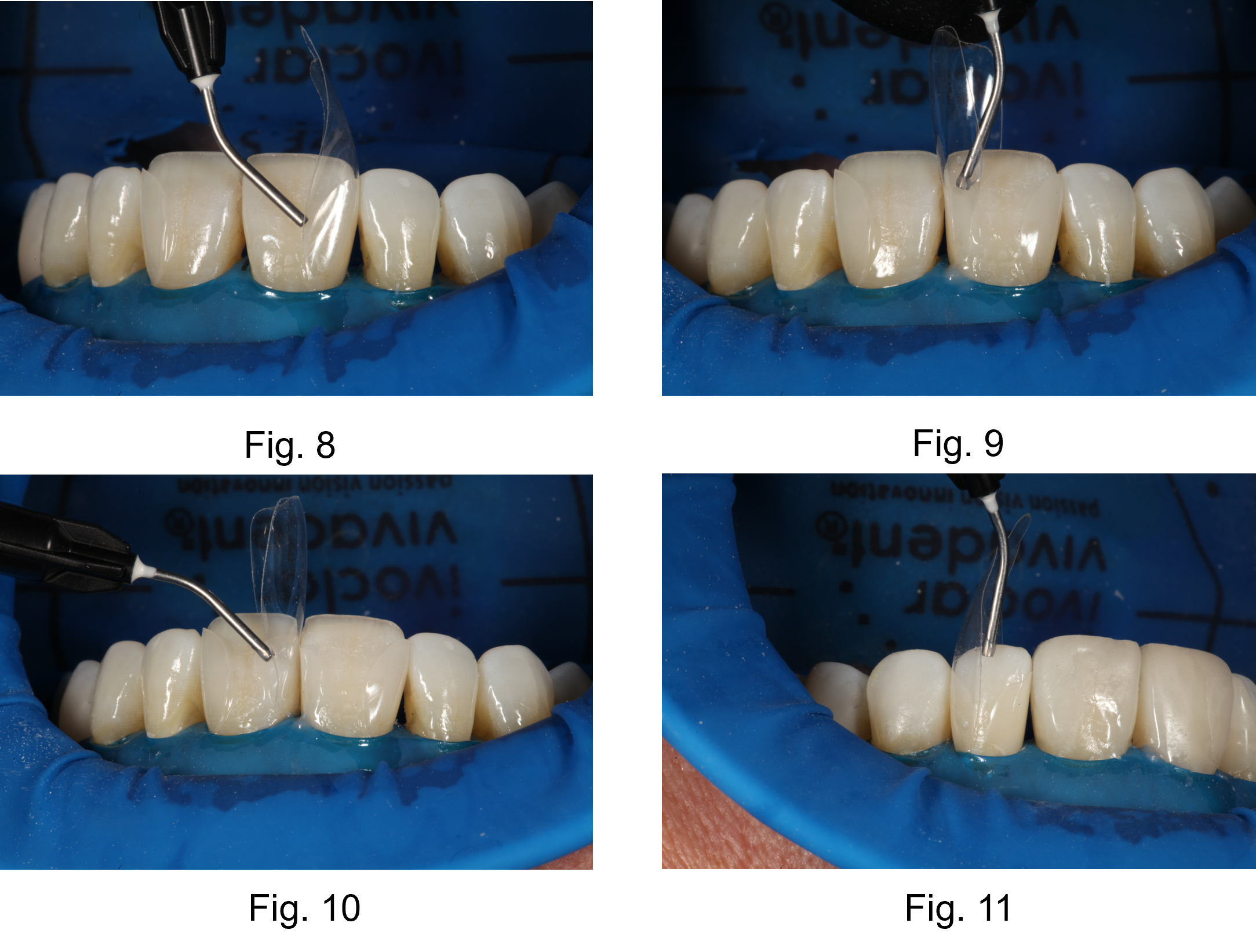 Once all of the interproximal spaces had been filled, I trimmed the rubber dam so that I had full access to the gingival margins so I could then use regular OMNICHROMA on the facial to finalize the facial contours. Finishing and polishing was accomplished using fine grit diamond and carbide burs (Komet), Softlex disks (3M ESPE), IPR strips (Kerr), and composite polishers (Komet). Even with the teeth exceedingly dehydrated, the OMNICHROMA composite looked very nice as the patient was dismissed [figure 12, figure 13].
Once all of the interproximal spaces had been filled, I trimmed the rubber dam so that I had full access to the gingival margins so I could then use regular OMNICHROMA on the facial to finalize the facial contours. Finishing and polishing was accomplished using fine grit diamond and carbide burs (Komet), Softlex disks (3M ESPE), IPR strips (Kerr), and composite polishers (Komet). Even with the teeth exceedingly dehydrated, the OMNICHROMA composite looked very nice as the patient was dismissed [figure 12, figure 13].
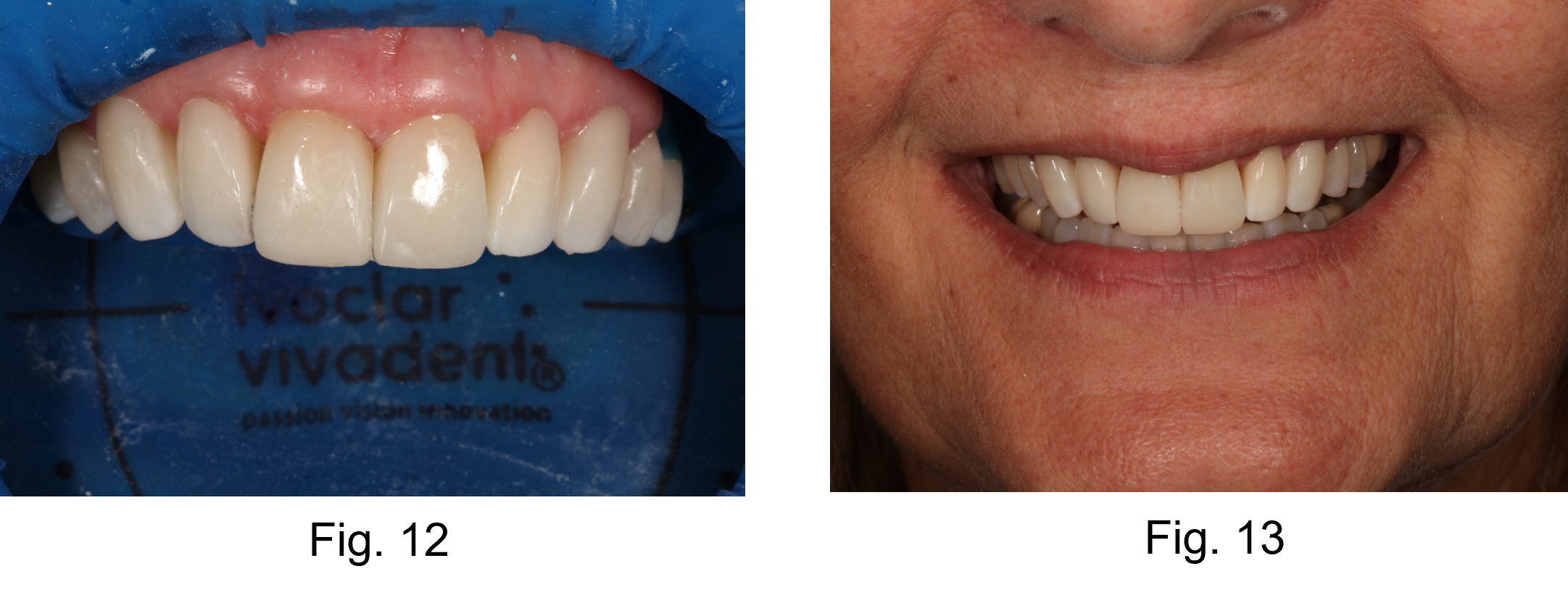
FINAL OUTCOME
The patient returned a few weeks later for a follow up to make sure flossing and occlusion were okay and to take final photos [Figure 14, figure 15, figure 16, figure 17, figure 18, figure 19]. Implementing OMNICHROMA and OMNICHROMA Flow in my daily routine has been a joyful experience. To see how one material can match such a broad range of tooth colors never ceases to amaze me.
